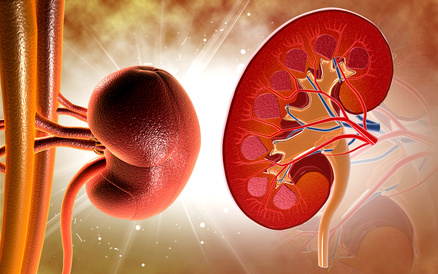Courtesy of dr. Carlos Fava.
At first, renal denervation enjoyed a considerable boost because, according to early studies, it lowered blood pressure (BP). However, after the results of the SYMPLICITY HTN 3 Trial its popularity decreased. Currently, the development of new technologies and greater operator experience may facilitate a change in this scenario.

This is an international multicenter randomized 1:1 study with a control group. It included 353 patients. In an interim analysis, 38 patients underwent renal denervation (RDN) and 42 constituted de control group (CG), with a 3-month follow-up.
Inclusion criteria were mild to moderate hypertension, defined as office systolic blood pressure (SBP) ≥150 mmHg and <180 mmHg; office diastolic blood pressure (DBP) ≥90 mmHg; and mean 24-h ambulatory SBP ≥140 mmHg and <170 mmHg. These patients also had to be drug-naive or, if they received medical treatment, it had to be discontinued 3-4 weeks before randomization.
Read also: “Very Late Thrombosis in Bioresorbable Scaffolds”.
The trial used the Symplicity Spyral multielectrode catheter (Medtronic), with 4 electrodes for circumferential ablation in the four quadrants of the renal artery. The catheter was used in main arteries of up to 8 mm, accessory renal arteries and branches of up to 3 mm. The control group only underwent renal angiography.
The primary endpoint was reduction of blood pressure as measured by mean 24-h ambulatory SBP at 3 months. Populations were similar, except for a higher number of smoking patients in the control group.
During the procedure, the contrast injection was greater for the RDN group. There were 43.8 ablations per patient, in 2.2 main vessels and 5.2 secondary branches.
Read also: “Conscious Sedation in TAVR: Is It Advisable?”
At 3 months, 82% of patients in the RDN group and 88.1% in the control group had not received antihypertensive medication.
During those first 90 days after the procedure, the RDN group showed a significant reduction in office SBD, office DBP, and 24-h ambulatory SBP: 24-h SBP -5.5 mmHg (95% confidence interval [CI]: -9.1 to -2.0; p = 0.0031), 24-h DBP -4.8 mmHg (-7.0 to -2.6; p < 0.0001), office SBP -10.0 mmHg (-15.1 to -4.9; p = 0.0004), and office DBP -5.3 mmHg (-7.8 to -2.7; p = 0.0002). There were no differences in the control group at 24 hours and at 3 months.
Adjusted analyses showed similar findings.
There were no procedure-related complications during the intervention and at 3 months.
Discussion
This study is different from those that came before it mainly due to the characteristics of its population, the absence of antihypertensive medication, the denervation technique used, the characteristics of the catheter used, and, above all, greater operator experience.
While results at 3 months are encouraging, we must wait for time to prove its livability and to make sure that there will be no hypertension complications in the long term.
It is also important to know whether RDN requires antihypertensive medication, and, if yes, which and the appropriate doses.
A long-term follow-up with a higher number of patients is mandatory to determine whether RDN plays a part in hypertension, and to identify groups that would benefit from this option.
Courtesy of dr. Carlos Fava.
Original title: Catheter-Based Renal Denervation in Patients with Uncontrolled Hypertension in Absence of Antihypertensive Medication (SPYRAL HTN-OFF MED): A Randomised, Sham-Controlled, Proof-of-Concept Trial.
Reference: Raymond Townsend, et al. Lancet Published Online August 28, 2017.
Get the latest scientific articles on interventional cardiologySubscribe to our weekly newsletter
We are interested in your opinion. Please, leave your comments, thoughts, questions, etc., below. They will be most welcome.





